Friday I decided to spend the day visiting the great Cathedrals of Dublin, as well as crossing off Dublin Castle and the Book of Kells from my to-see list.
First was the The Old Library and the Book of Kells Exhibition. The Book of Kells portion of the exhibition featured a couple of big rooms that you walk through which explain what the Book of Kells is, who wrote it, the methods used in creation, and details about other illuminated manuscripts (a couple of which are also on display). In the end of the exhibit, in a dark room, you finally get to actually see the Book of Kells, under glass and open to an illuminated page. It was pretty cool to see such a famous book, and I think I can safely say it’s the oldest book I’ve ever seen. Now it was the Book of Kells that really drew my interest to this location, but I was in for quite a treat when I walked upstairs to the Long Room for the Old Library portion of the exhibit. From the site: “The main chamber of the Old Library is the Long Room, and at nearly 65 metres in length, it is filled with 200,000 of the Library’s oldest books. “ It was beautiful! While I probably will get an ebook reader one of these days, I still am firmly in the “I like to touch books” camp.
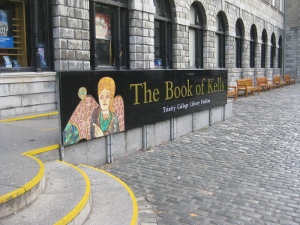
It was then off to Dublin Castle. It was the one thing on my list I already felt somewhat familiar with because MJ sent me pictures and told me about it the last time he was in Dublin, but there is nothing like seeing it for yourself. It was built in the 1200s on the orders of King John of England and throughout the centuries it primarily was the seat of British rule within the country. Since the formation of the Irish Free State it’s now a major Irish government building, the inauguration of the Irish president happens here, among other things.
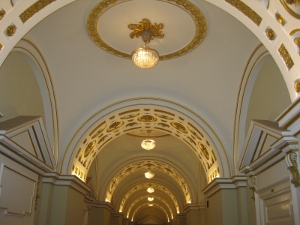
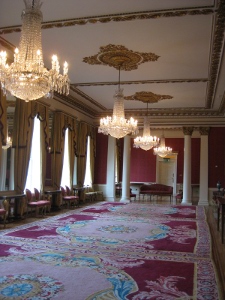
The original castle lasted until the 1600s when it was rebuilt to be the structure we largely see today. Only one of the original record tower remaining standing today. However, excavations of the site unearthed the foundations of a second “Powder” tower and one of the archways which used to stretch over the River Poddle. The tour guide also pointed out what deeper excavations showed, what they believe to be part of the original fortifications that the vikings put in place on that location even earlier than the original towers.
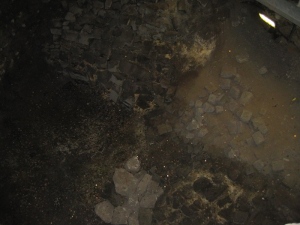
My next stop was Christ Church Cathedral. I am not a Christian, but cathedrals have always fascinated me. This fascination turned into awe as I got older and could further appreciate the exceptional amount of work and artistry that was put into them by people in times past who didn’t have access to the technology we have today.
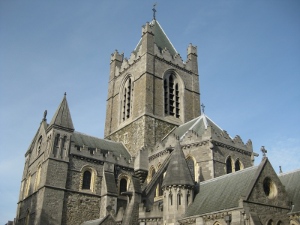
The inside of the cathedral was stunning, huge stained glass windows, the amazing architecture you come to expect from such places, and probably the most welcoming staff I’d encountered on my already exceptionally welcoming trip!
Aside from the typical splendor of a grand cathedral, Christ Church has some interesting artifacts, the first being a holy relic – the preserved heart of St Laurence O’Toole. Earlier in my trip Laura had told me that the head of another religious figure was in a cathedral we passed, and not knowing much about Catholic lore it struck me as somewhat macabre. It turns out that it’s very common for these old European catholic churches to have them and in the faith they are regarded as a source of miracles. Still a bit creepy for me but at least I had an explanation.
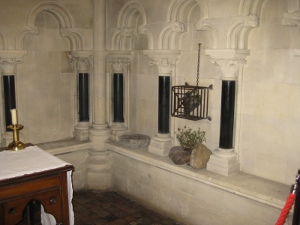
A less spiritual duo also graces the halls of Christ Church Cathedral – a cat and rat which became trapped in an organ pipe in the 1850s and were mummified. They are now on display downstairs in the crypt, where there is also a coffee shop.
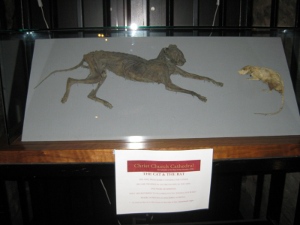
It was then time for lunch! I stopped at Legends Bar for a nice sandwich and drink.
The other famous cathedral on my list was Saint Patrick’s Cathedral. Another gorgeous church full of Irish history, it also boasts a beautiful park just next to it.
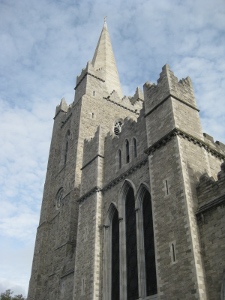
Perhaps their most famous burial is that of Jonathan Swift, a cleric who became Dean of Saint Patrick’s and is most famous as the author of the popular Gulliver’s Travels. In the center of the church you can see his burial plate.
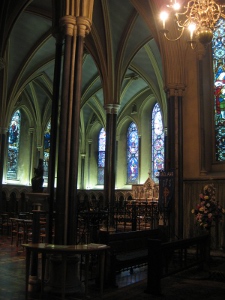
I took a TON more photos during the day, which are over in my Dublin flickr gallery.
By the time I had finished visiting Saint Patrick’s I was pretty tired, so I headed back to the hotel to relax for a bit. When MJ got back from work we headed out to the second of three “formerly something else and now a bar” places I went to in Dublin – The Bank on College Green. Of course this used to be a bank! I enjoyed my first Bulmers Cider of the trip (after completely forgetting it existed for the first half of my trip, I love British Isles cider!) and a wonderful Guinness and beef pie.
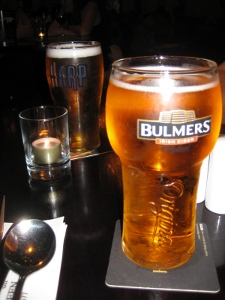
We wrapped up the evening with a stop at The Porterhouse Brewery Central location on the way to our hotel. I snagged their red ale since ales tend to be what I prefer, but I wasn’t a huge fan. Luckily they were able to redeem themselves the following night when I tried their fantastic porter.

